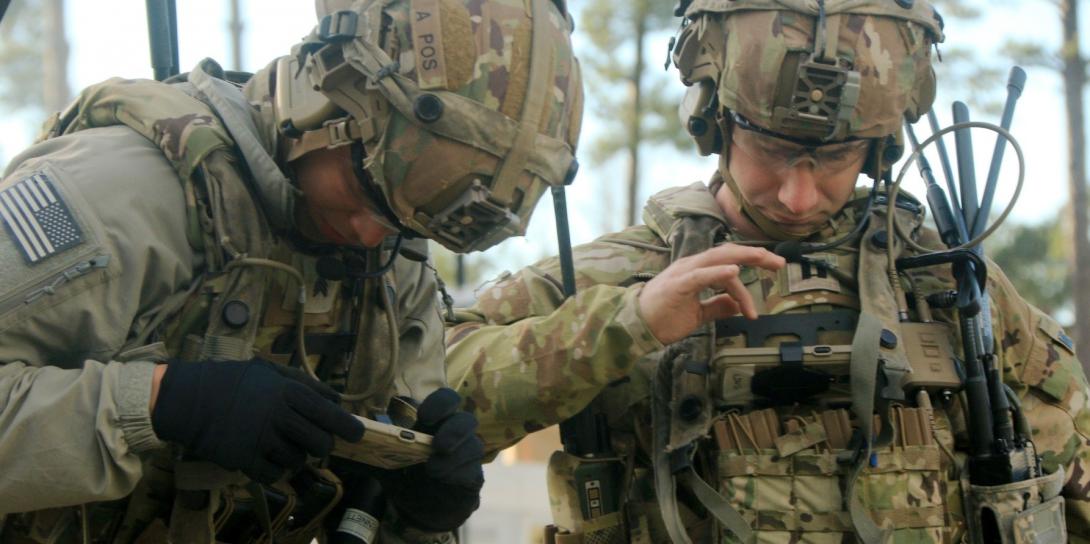Army Marching Forward on Unified Network
Over the next couple of years, the U.S. Army will experience a significant shift in its approach to network modernization and will progress toward a unified network for both enterprise and tactical purposes, according to Lt. Gen. John Morrison, USA, the service’s deputy chief of staff, G-6.
Gen. Morrison made the comments earlier today during the TechNet Augusta Virtual Solutions Series. “That unifying architecture is something that the Army is working very, very hard on. Over the next two years, we will make a shift in the way that we’ve been approaching our modernization efforts,” Gen. Morrison stated.
He pointed out that the Army Requirements Oversight Council recently approved the first requirements document “that lays out that unifying requirement to operate, maintain, and defend the network end to end” and called the achievement a “significant milestone.”
“No more will we be buying [Department of Defense Information Network operations], or network ops or network security tools for the enterprise and tactical. We’ll be buying unifying capabilities that will allow us to seamlessly see the network from end to end, to seamlessly secure and defend the network from end to end, and most importantly, the capability to maneuver the network against a thinking adversary in a contested and congested environment.”
Describing a “false divide” between enterprise networks and tactical networks, the general explained that enterprise network modernization has focused primarily on the Non-classified Internet Protocol Network, or NIPRNET, on Army installations while tactical network modernization has focused on the brigade combat tams. “We need to move that echelon up and get back to where our corps and our divisions are units of maneuver. We need to seamlessly link that back to the enterprise to where our investments in the enterprise are supporting what we would want our tactical formations to be doing in a multidomain fight … applying effects across all echelons.”
The shift includes purchasing network equipment for the tactical edge that can be used at the echelon level rather than the other way around. “The notion is that we build from the tactical edge back. One of the things we’ve been a little challenged on is we tried to take enterprise solutions and push them into the tactical space, which is much more severe bandwidth limitations, all the things you can think of. The end state is a common set of unifying capabilities for the operations, maintenance, security and defense of the unified network. That’s where we’re headed.”
One major step in that shift should occur in the coming weeks, he predicted. “We are finalizing what we’re calling the Army Network Plan. We expect to have that here over the next couple of months,” he reported. “It’s that document that gives us the framework to start moving this forward.”
Lt. Gen. John Morrison, USA, Army deputy chief of staff/G6, says the Army will complete its #Network Plan in the next couple of months.#AFCEATechNet
— George Seffers (@gseffers) April 20, 2021
He suggested the service is moving aggressively. “The reason we want to have it done over the next couple of months is we really want to begin making the shift toward this [unified network] construct in FY22 [fiscal year 2022]. We don’t want this to be something where we push it several years out before we start making the turn.”
The general noted that the Army is providing lighter, more capable communications equipment to its expeditionary signal battalions, converting them to expeditionary signal battalions-Enhanced (ESB-E).
That lighter, more capable equipment is expected to allow the enhanced expeditionary signal battalions to operate with fewer personnel. “The ESB-Es were not the big idea. The big idea was aligning those personnel efficiencies that we gained by going to much smaller, much more agile, much more capable kit and establishing a [Department of Defense Information Network operations] framework, that ability to command and control, operate, maintain, defend, secure and maneuver the network at all echelons, whether it be at the enterprise or into our tactical formations,” he asserted. “That movement begins next year.”
For more coverage of the ESB-Es and Army network modernization efforts, read the May issue of SIGNAL Magazine.





Comments